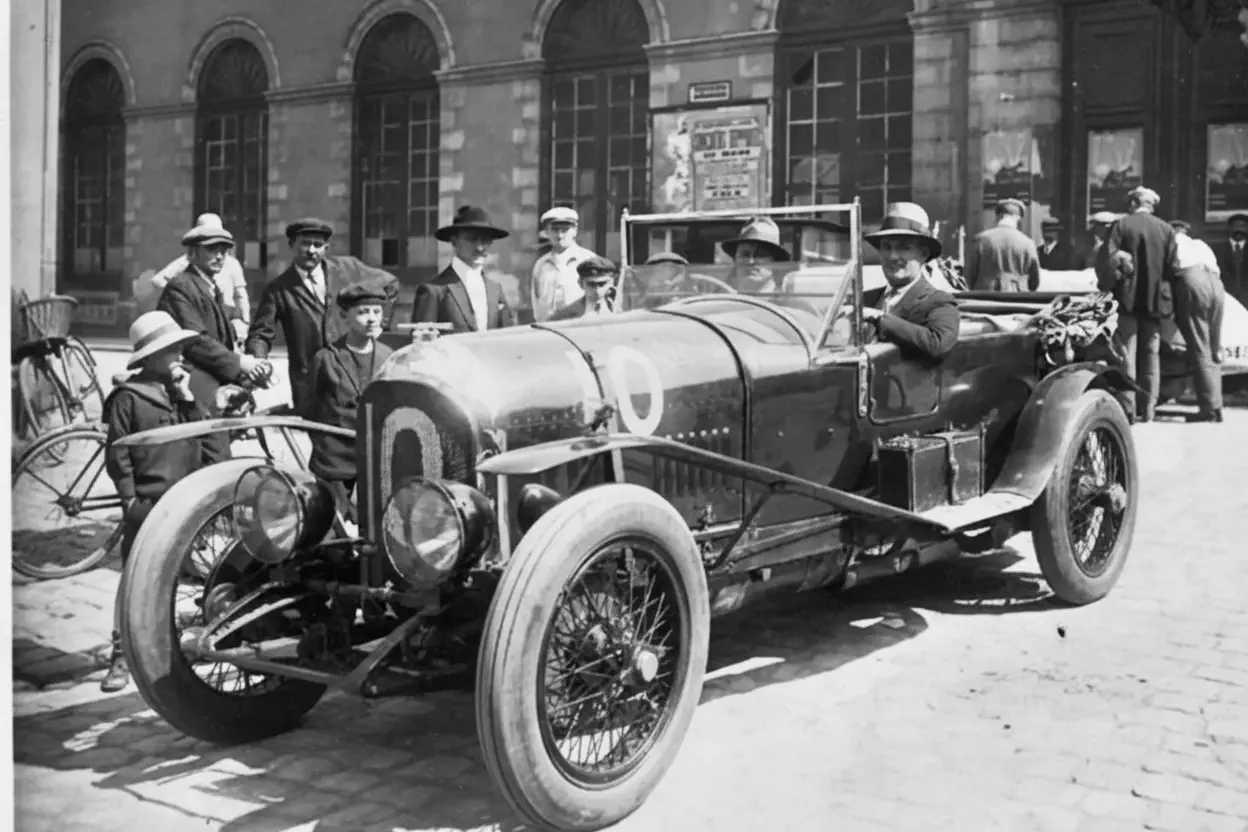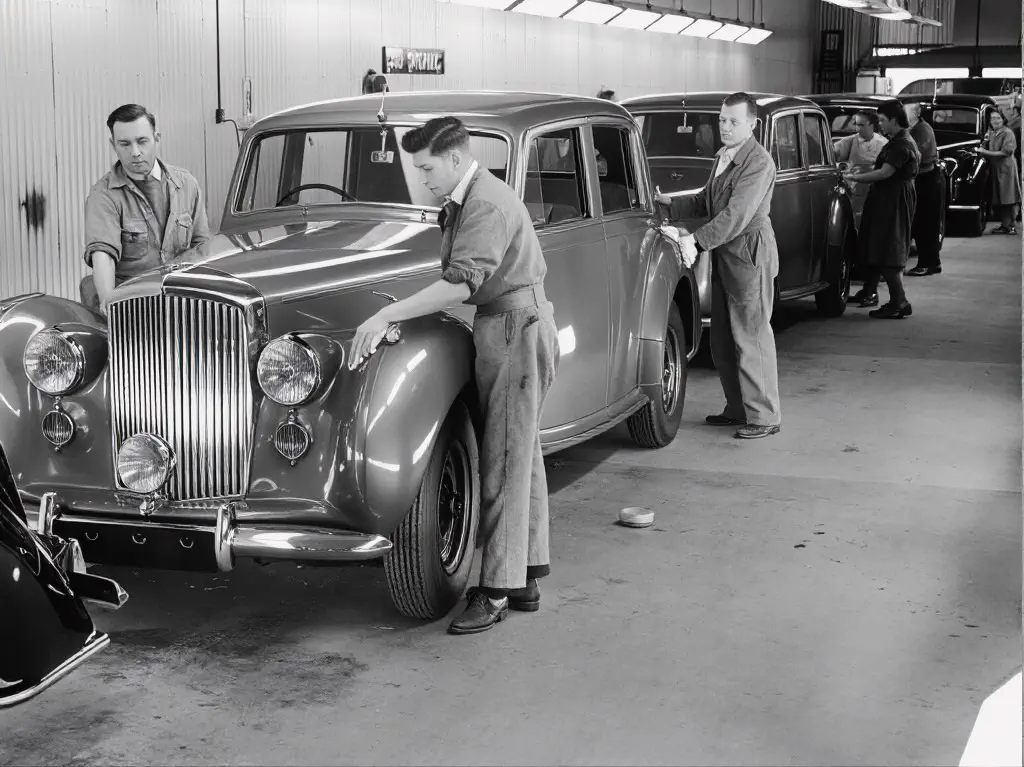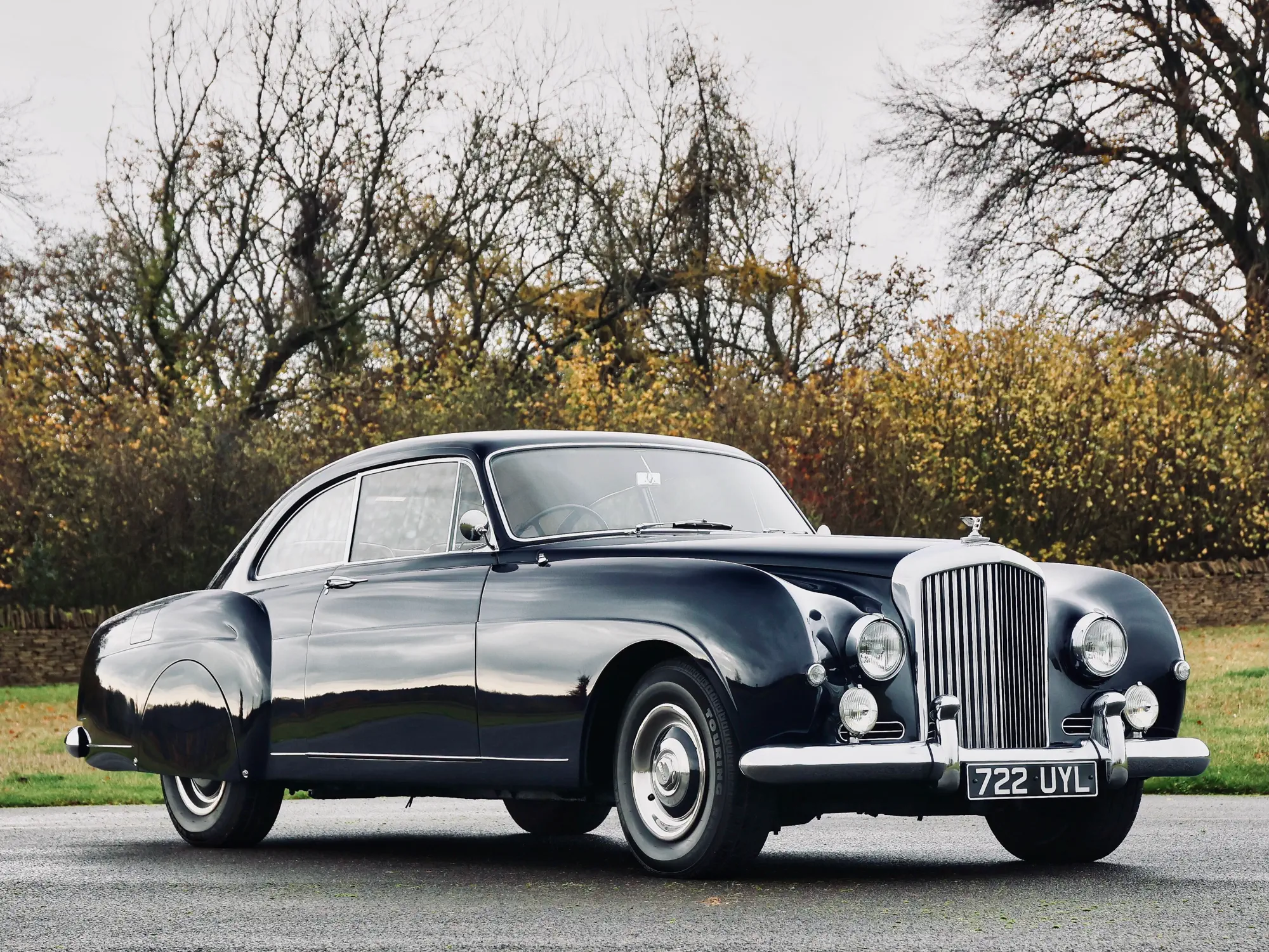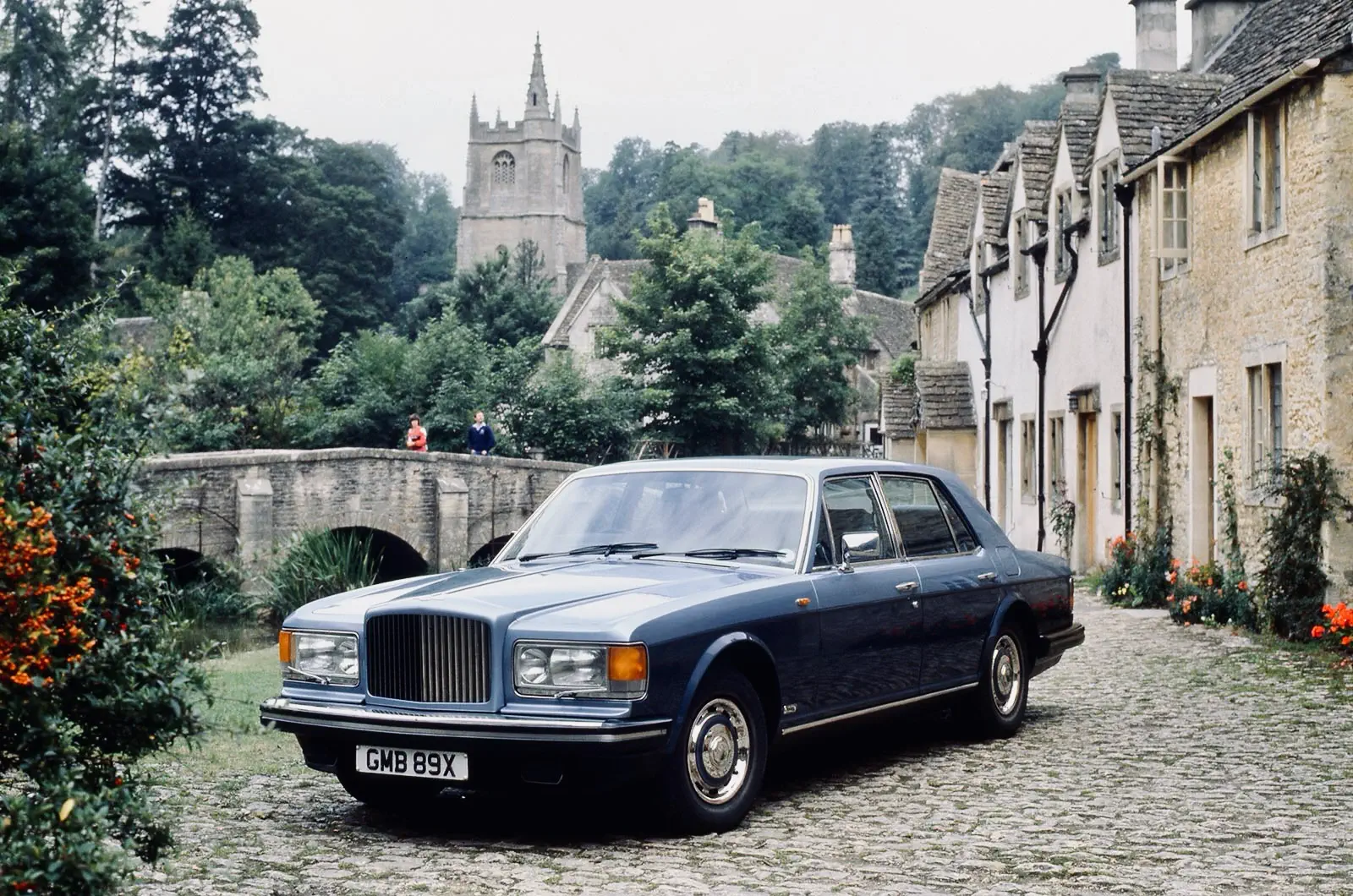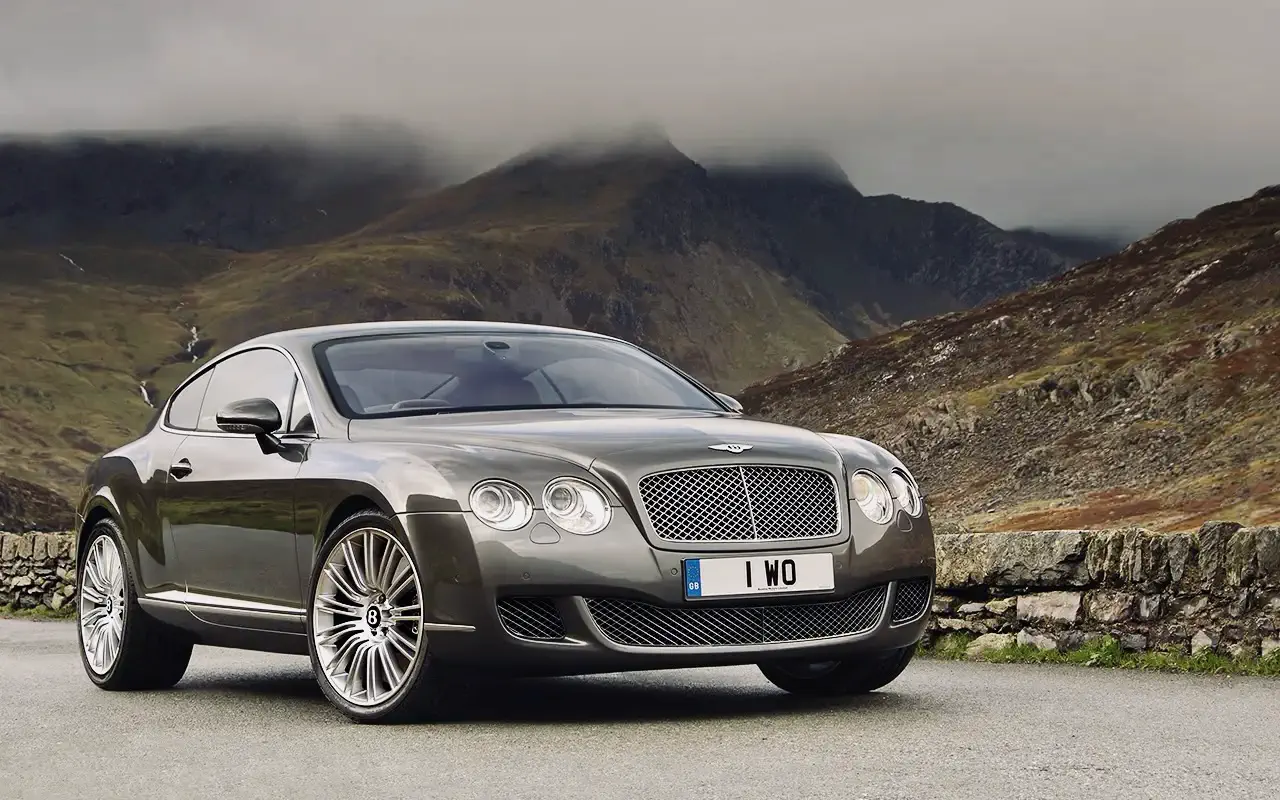Bentley: The Return of the Hooligan

Bentley is a car company with a spectacular split personality. In its youth, it was a hell-raising, champagne-swilling hooligan who built giant, magnificent racing cars and won Le Mans for a laugh. Then, after a financial mishap, it was forced into a long, quiet, respectable marriage, spent seventy years wearing a tweed suit, and almost forgot its own name. This is the story of that hooligan's long hibernation, and its magnificent, tyre-smoking return to form.
The Original Sinner
W.O. Bentley founded his motor company in July 1919 with a mission statement of refreshing clarity: build a fast car, a good car, the best in its class. He wanted to apply aircraft engineering principles to road cars and see what happened when you raced them until something broke.
The answer arrived in 1921 with the 3 Litre, a machine that established everything Bentley would represent. Where rivals used cast iron pistons and hoped for the best, Bentley specified aluminium alloy components borrowed from his wartime aero-engine work. Where others fitted side-valve engines, Bentley used overhead camshafts for higher revolutions. Where most manufacturers considered two brakes adequate, Bentley fitted four. The cooling systems actually functioned at sustained high speeds, a revelation in 1920s motor sport.
The cars were anvil-tough machines that could maintain punishing speeds for improbable distances without mechanical tragedy. The 4½ Litre arrived in 1927, offering even more power and presence. When Bentley entered the 24 Hours of Le Mans in 1924, it won. Then it won in 1927, 1928, 1929, and 1930. Five victories in seven years, a record that announced British engineering could outlast everything Continental manufacturers produced.
The Bentley Boys and the Green Machines
The racing programme attracted a following of wealthy, reckless young men who became known as the Bentley Boys. This legendary crew of financiers, diamond heirs, and adventurers had a taste for high speed and hard living. They took W.O.'s giant green cars to the most gruelling race in the world and utterly dominated.
These adventurers raced for glory rather than wages. Woolf Barnato, heir to a diamond fortune, famously drove one race single-handedly and raced his Bentley against the Blue Train from Cannes to London, arriving first. When cars crashed and caught fire, mechanics beat out the flames and hammered the bodywork approximately straight before sending them back to win. The Bentley Boys were heroes, and their thundering green machines were the fastest, toughest cars on Earth.
The problem with building excellent racing cars at enormous expense is the business model. By the late 1920s, the Cricklewood factory employed about 500 souls, all toiling away in what was essentially an oversised workshop, building cars that cost more to produce than customers would pay. Bentley was running on enthusiasm, credit, and Barnato's diamond money. The Great Depression finished what poor accounting had started.
Captured by the Enemy
This glorious era, however, was built on enthusiasm rather than profit. The Great Depression finished the company off, and in 1931, Bentley went bankrupt. Rolls-Royce bought it for £125,275. For the next seventy years, the hooligan was sent to a very quiet, very luxurious prison.
Rolls-Royce had zero interest in racing or building brutal sports cars. They moved production from Cricklewood to Derby and set about transforming Bentley into something civilised. The first Derby Bentley, the 3½ Litre, was marketed as the "Silent Sports Car," which perfectly captured the new philosophy. These machines retained serious performance but clothed it in whisper-quiet operation and luxurious refinement.
Bentley, the world-beating racing champion, was now tasked with making slightly sportier, slightly cheaper versions of Rolls-Royces. In 1946, production moved to Crewe, where the factory that had built 26,065 Merlin aero engines during the war now turned its precision manufacturing to luxury motor cars. The Mark VI became the first Bentley with a factory-built steel body, enabling better quality control than the old coachbuilt approach.
Rare Glimpses of the Caged Animal
It was a long, quiet hibernation. The cars were, of course, exquisitely made in the Crewe factory, but the fire had gone out. A Bentley became a Rolls-Royce with a different grille. There were rare flashes of the old brilliance, like the stunning R-Type Continental in the 1950s, a car of immense speed and grace that hinted at the caged animal within.
The R-Type Continental of 1952 was a streamlined coupe using wind tunnel aerodynamics borrowed from Rolls-Royce's aircraft division. It was the world's fastest four-seater and proved that somewhere beneath the tweed suit, the racing pedigree still existed. The 1960s brought the T-Series with independent suspension and improved comfort. The 1970s saw the 6.75-litre V8 refined to higher outputs.
For the most part, the Bentley name was just a ghost, a badge on another company's car. These were exquisitely made machines that wealthy customers purchased in sufficient numbers to keep Crewe operating, but the fire had gone out. Bentley had become respectable, refined, and rather boring.
The First Growl of a Waking Giant
Then, in the 1980s, a few engineers at Crewe decided to poke the sleeping bear. They took the firm's enormous, silent 6.75-litre V8 engine and bolted a turbocharger the size of a dustbin to it. The resulting Bentley Mulsanne Turbo was a thunderclap in the calm of the library. This three-ton palace on wheels could now launch itself towards the horizon with a force that could rearrange your internal organs.
The Turbo R followed in 1985, adding a proper handling package that allowed the car to corner rather than simply point in the desired direction and hope. For the first time in fifty years, a Bentley was a genuine driver's car again. Wealthy customers who remembered the brand's racing heritage suddenly rediscovered their enthusiasm. Sales increased. The motoring press wrote about Bentleys with genuine excitement rather than respectful boredom. The hooligan was starting to wake up.
The Great Escape and the German Renaissance
The final liberation came in 1998, when parent company Vickers sold both Rolls-Royce and Bentley. After a fantastically complicated bidding war between Volkswagen and BMW, the two brands were split apart. VW ended up with Bentley and the all-important Crewe factory. For the first time since 1931, Bentley was its own master, and it now had the colossal financial might of the Volkswagen Group to fund its comeback.
The Germans understood exactly what Bentley needed to be. It needed to reclaim the spirit of the Bentley Boys, but clothe it in the luxury that had been perfected during the Rolls-Royce years. Volkswagen invested over £1 billion into Crewe, modernising the factory while preserving its handcrafted traditions.
The first car of this new era, the 2003 Continental GT, was nothing short of a revolution. It was a stunning, muscular, all-wheel-drive coupe with a twin-turbo W12 engine, capable of nearly 200 mph. It was indecently fast, beautifully built, and oozed a confident arrogance that had been missing for decades. It was the first true Bentley in a lifetime.
Production at Crewe jumped from 400 cars in 1998 to 10,000 annually by 2007. The Continental GT proved that enormous demand existed for a luxury grand tourer that refused to apologise for its performance. It was unapologetically a Bentley, combining the brand's historical commitment to speed with modern luxury and technology.
The Return to Le Mans
To hammer the point home, Bentley returned to its old hunting ground. In 2003, exactly 73 years after the Bentley Boys' last victory, a pair of new, green Bentley Speed 8s entered the Le Mans 24-hour race. In a hugely emotional and dominant performance, they finished first and second. The hooligan was back, and it was winning again.
The brand that had spent seven decades in quiet captivity had rediscovered its youth. The Continental GT's success funded expansion. The Flying Spur arrived in 2005 as a four-door grand tourer. The Mulsanne flagship of 2010 revived the great saloon tradition with its hand-built 6.75-litre V8 and interiors requiring 200 hours of craftsmanship.
The Most Unlikely Triumph
The most significant expansion came in 2015 with the Bentayga, Bentley's first SUV. The automotive establishment predicted disaster. Bentley customers, they insisted, did want sport utility vehicles. They were spectacularly wrong. The Bentayga became Bentley's best-selling model, proving that wealthy customers valued performance luxury regardless of body style. The brand that built racing cars in the 1920s and hushed saloons in the 1960s now built the world's fastest, most luxurious SUV.
Throughout this renaissance, Crewe maintained its unique approach: complete vertical integration with all design, engineering, and manufacturing on one campus. Each car's interior featured up to 14 hides and over 40 pieces of wood trim, finished by hand to standards that required weeks of work. Bentley was mass-producing cars at a rate W.O. could never have imagined while maintaining handcraft quality that would have satisfied the most demanding 1920s coachbuilder.
The Electric Hooligan
In 2020, Bentley announced Beyond100, its strategy for transformation into a fully electric luxury brand. By 2026, the first fully electric Bentley will enter production. By 2035, the entire lineup will be battery-powered. All current models now offer plug-in hybrid options, including the Ultra Performance Hybrid delivering over 750bhp with near-zero emissions.
Crewe itself has transformed into what Bentley calls the "Dream Factory," a carbon-neutral, digitalised manufacturing hub preparing for electric vehicle production. A new Engineering Technical Centre opened in 2025 for prototype development, software integration, and high-voltage systems testing. An Integrated Logistics Centre follows in 2027, adding automated storage and 35 percent more capacity for battery-powered production.
This represents another transformation as profound as the Rolls-Royce acquisition or the VW rescue. Bentley is abandoning the combustion engines that powered every car from the 3 Litre to the current Continental, betting that electric performance can deliver the speed and luxury customers expect while meeting environmental regulations that will eliminate traditional powertrains.
The Perfect Synthesis
Today's Bentley is the perfect synthesis of its two lives. It has the impeccable, hand-crafted luxury that it learned during its long, quiet years in the gilded cage, but it also has the brutal, world-beating performance that was in its DNA from the very beginning. The split personality is whole. It is, once again, the best of both worlds.
From 1919 to the present, Bentley has lived four distinct lives: the racing hooligan who dominated Le Mans, the quiet prisoner making rebadged Rolls-Royces, the liberated performance brand rediscovering its youth, and now the electric luxury pioneer. What connects all four versions is W.O.'s original mission statement: a fast car, a good car, the best in its class. The execution changes with technology and ownership, but the fundamental promise survives. The hooligan may have spent decades in captivity and faces another transformation ahead, but it never truly died. It just needed the right circumstances to come roaring back.

